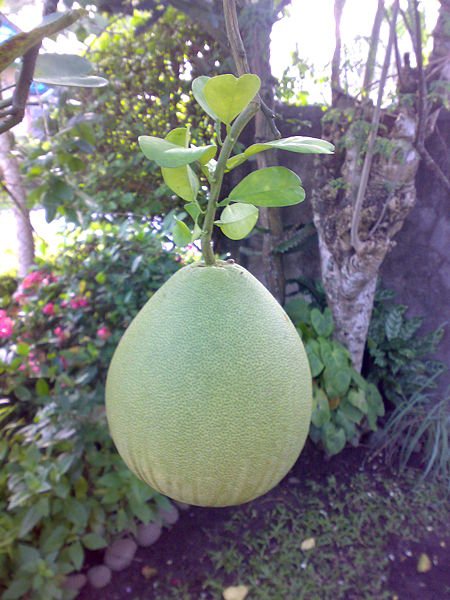|
TRANSLATIONS
The words pipiri and poporo are - I think - the result of several consecutive wordplays. They are twins and yet in opposition to each other. If pipiri announces the end of the old year in the darkest of time, then poporo will announce the end of the first half year at the apex of summer. The suggested structure possibly is correct for rongorongo if we with poporo mean hua poporo. The glyph type poporo, on the other hand evidently is located as if it was pipiri. If Makemson is correct in locating Pipiri to December, it is the opposite phenomenon - we expect poporo but find pipiri. I think pipiri is 'colourless', just a word for 'twins' located at a time of solstice (a 'sluggish' time). Poporo, on the other hand, definitely is 'dark'. It will therefore lend itself both to the beginning of the dark season (hua poporo) and to its end (the poporo glyph type).
The surrounding field of words include pepe (moth) and papa (the rock bottom), which 'vibrate' in harmony with pipi (snail) and popo (bundle). Time to move on to the next page in the glyph dictionary:
Awakea (the middle of the day) derives its name from Akea (Atea), which should be relevant in a discussion about the meaning of hau tea. In spite of tea meaning white (and implicitly the moon) it evidently was used for the day light. Marama (moon) can be read as ma-rama (with a torch), and Hina as equivalent to 'shine'. The quality is 'light'. Auina-la (the afternoon) possibly is au-(H)ina-Ra - which I imagine could be something like 'the smoke of Hina' (waning moon) which covers the face of sun, a softer version of the 'black cloth'.
Wordplay (or a real causal connection) could relate auinala with the Mayan uinal (and Vinapu). Mayan u is a word for the moon. Kihi (sunset) and kihipuka (dawn) makes me think of the kihikihi of Metoro. He used kihikihi as an alternaive where otherwise he normally said maro. If we transcribe kihi from Hawaiian it might be tihi, where ti ought to be the 'good luck' plant: ... In ancient Hawaiʻi the plant was thought to have great spiritual power; only high priests and chiefs were able to wear leaves around their necks during certain ritual activities. Ti leaves were also used to make lei, and to outline borders between properties (for which its alternative name: terminalis). To this day some Hawaiians plant Ti near their houses to bring good luck. The leaves are also used for lava sledding. A number of leaves are lashed together and people ride down hills on them ... The function of marking borders is the same as that of maro: "The name of the residence (maara noho) of the king, of Hotu, was Oromanga. The name of the place where the roof of the house had been covered by Nuku Kehu was Hare Topa (sic) Tuu. Nuku Kehu was also in charge of the feather garlands (maro), which served to mark the boundaries of the royal residence. He had pounded (the staffs with the feather garlands) into the ground. The middle (te tini) was located in front of the bay of Hanga Rua. The feather garlands went up, continued, and reached Puku Parari. They went up again and reached Puku O Heha. From Puku O Hea they formed (a line) to the side, to Aro Huri. From Aro Huri they turned again toward the sea and reached Maunga Koua, went down, went their way, and reached Hira Moko. (He) made a second line (? he rua taupa) of feather garlands." (Manuscript E:91 as translated in Barthel 2) As to kihikihi: "Kihikihi, a type of gray lichen (Lichenes), is even mentioned in the creation chant (second position, Himahima marao and Kihi tupu henua as parents)." (Barthel 2)
5 pairs of 'generators' at the beginning belong together (according to the order given by Alpers). The 'products' are hua poporo, kihikihi, miro, ti, and riku. I have here tried to translate back from English to Rapanui. Let us now look at the 'original' (from Fischer):
Taporō is translated by Fischer as Sweet Lime (a Tahitian loan). I believe that is a better translation than Roundness. Remember: '... It is said that although the angry god took three months to collect his forces, he was unable to subdue the rebels, and, disbanding his army, resolved on more efficient revenge. At his command the dark clouds gathered and burst, pouring streams on the devoted earth. Towns, hills, mountains were successively submerged; but the rebels, secure in the superior height of their own dwelling-place, looked on without concern. But when, at last, the terrible surges invaded their fortress, they cried for direction to a god who, according to one account, instructed them to form a float of the fruit of the shaddock ...' Taporō is a word which is in harmony with poporo, and even if the 'original' was a shaddock fruit (with her fine roundness, looking like a great green drop of water) word-play is important.
I translated 'the poporo berry' into hua poporo, but Fischer has 'the poporo plant'. Alpers' translation is better, because it is necessary to suggest a fruit as the offspring of 'sweet mother'. A Polynesian will, presumably, think of the black berries instead of the plant when hearing poporo. Yet Fischer presumably is right - at the beginning it cannot be hua poporo, it should be the poporo plant:
Maybe Pa10-5 is a combination of the Roundness and the god with angry eyes? The copulation could be visualized in Pa10-7. It became obvious in this exercise of mine that the chant in Fischer was not the same as that in Alpers. Alpers (in Legends of the South Seas) has 21 creations and Fischer 44. It is Alpers who has 'adapted' it e.g. by putting a full stop after 5 creations. |













